Wilt u Windows 11 installeren op een computer die officieel niet wordt ondersteund?
Bijvoorbeeld omdat uw systeem geen TPM 2.0 heeft, Secure Boot ontbreekt of omdat u liever een lokaal account gebruikt?
Met het gratis programma Rufus kunt u op eenvoudige wijze een aangepaste installatie-USB maken waarmee u deze beperkingen kunt omzeilen.
Meld u dan aan voor onze nieuwsbrief.
In dit artikel leest u stap voor stap hoe u Windows 11 toch kunt installeren op een niet-ondersteunde pc, zonder ingewikkelde aanpassingen of foutmeldingen.
Dit artikel is recent bijgewerkt om te voldoen aan de laatste wijzigingen op dit gebied. De methode Rufus is toegevoegd om het proces makkelijker te maken.
Windows 11 installeren op een oude pc
Om Windows 11 op een niet-ondersteunde computer te installeren met behulp van Rufus, begint u met het downloaden van het officiële Windows 11 ISO-bestand van de Microsoft website.
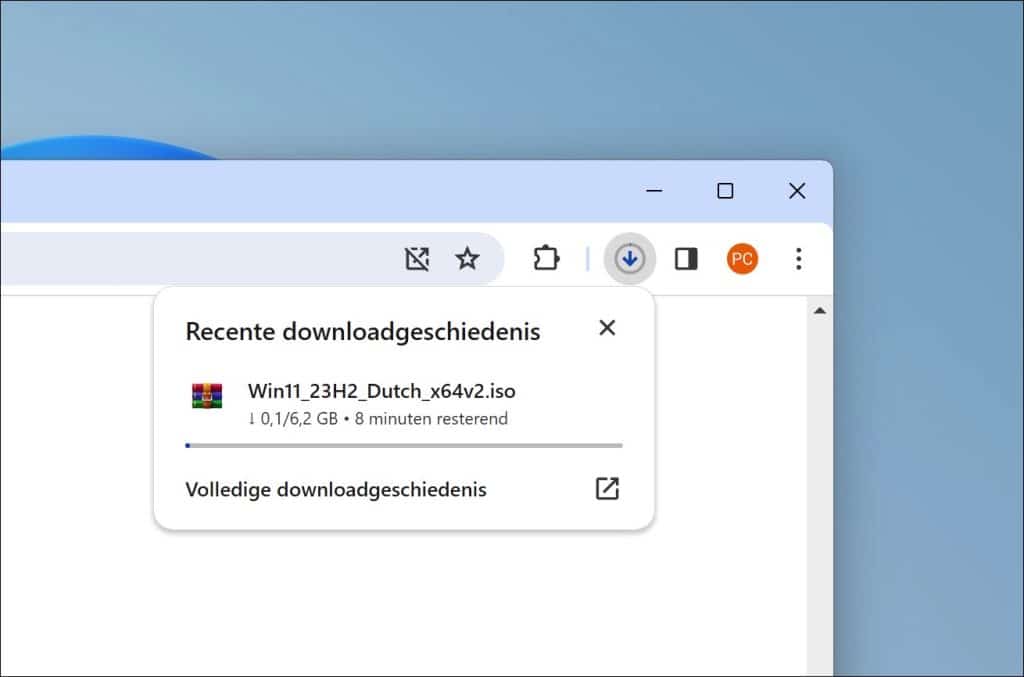
Daarna downloadt u Rufus, waarmee u eenvoudig een opstartbare USB-stick kunt maken.
Sluit vervolgens een USB-stick van minimaal 8 GB aan op uw computer en start het programma Rufus.
Rufus herkent automatisch uw USB-stick.
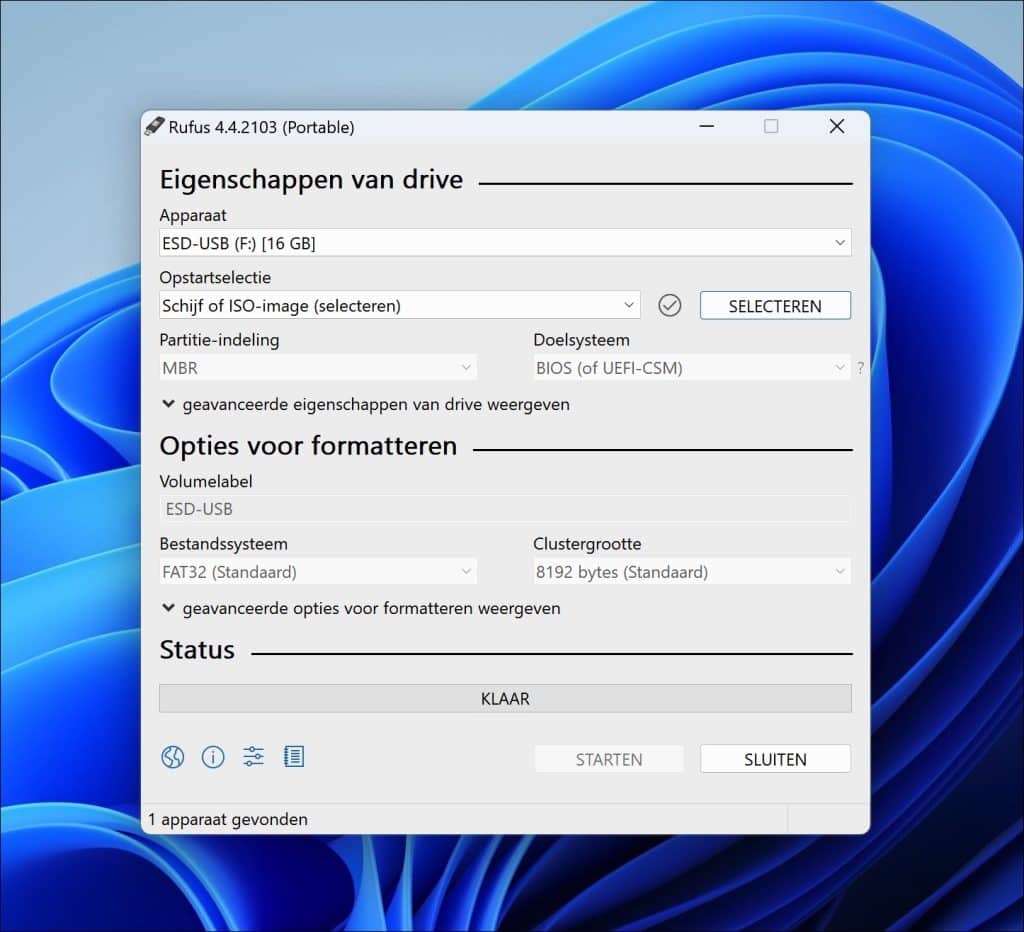
Klik binnen Rufus op de knop ‘SELECTEREN’ en kies vervolgens het eerder gedownloade Windows 11 ISO-bestand.
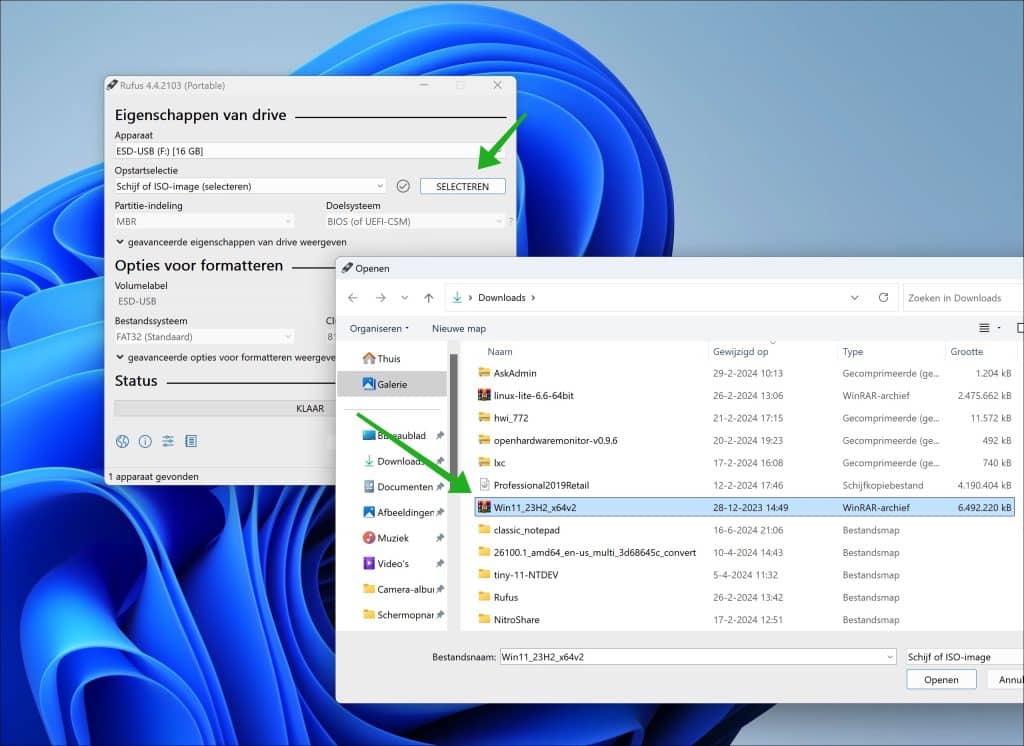
Klik op ‘Starten’ en selecteer de optie ‘Verwijder de vereiste voor 4GB+ RAM, Secure Boot en TPM 2.0’.
De overige instellingen kunt u meestal op hun standaardwaarden laten staan.
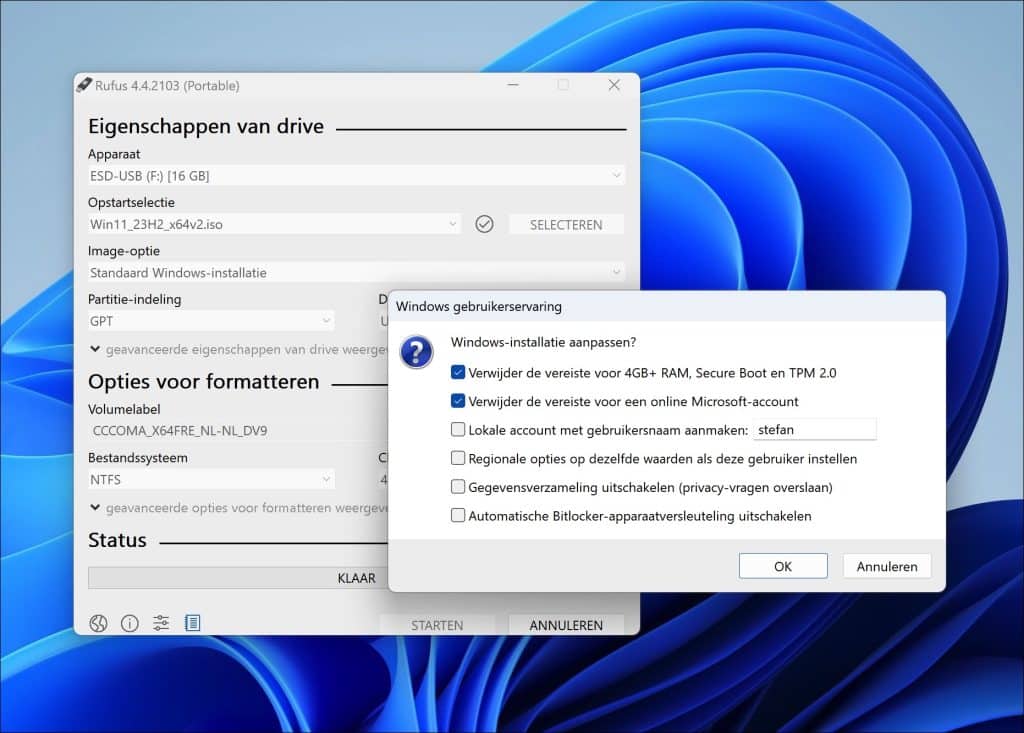
Desgewenst kunt u hier ook aangeven dat u de verplichting om een Microsoft-account aan te maken wilt omzeilen.
Klik daarna op ‘OK’. Let erop dat hiermee alle gegevens op uw USB-stick worden gewist.
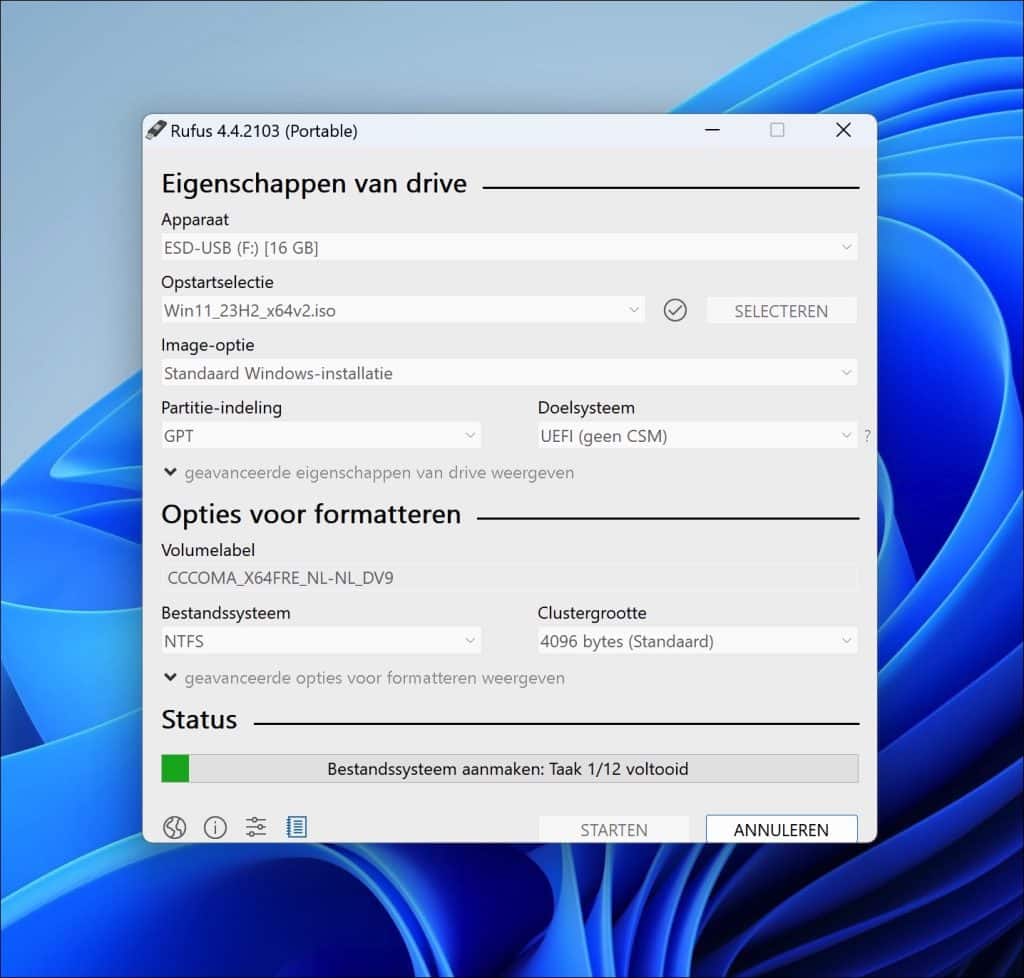
Wanneer Rufus klaar is, opent u de USB-stick via de Windows Verkenner en voert u het bestand ‘setup.exe’ uit.
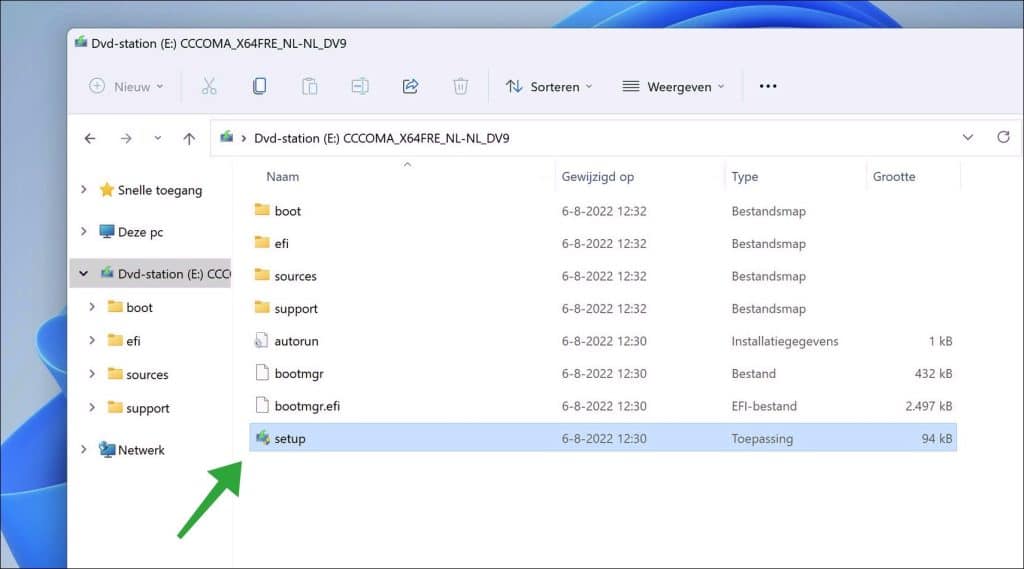
De installatie van Windows 11 zal vervolgens starten.
Houd er rekening mee dat het installeren van Windows 11 op niet-ondersteunde hardware mogelijk kan leiden tot stabiliteitsproblemen of een gebrek aan toekomstige updates.
Zorg daarom altijd dat u vooraf een externe back-up maakt van belangrijke gegevens.

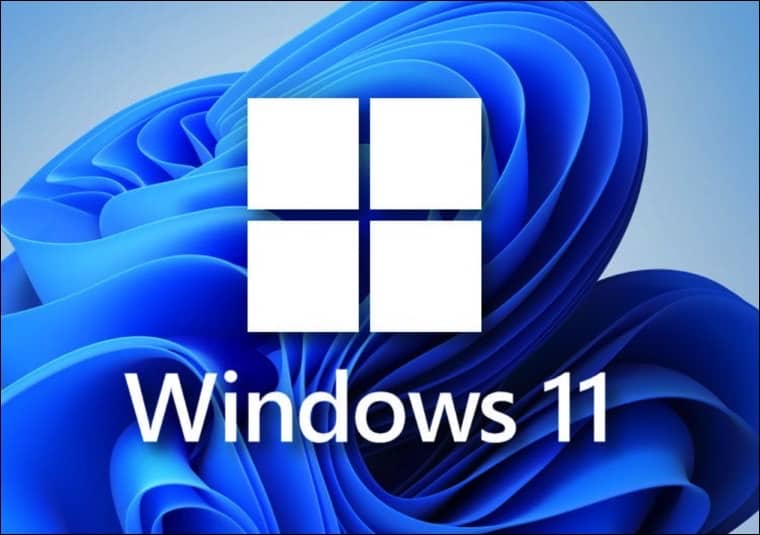
is dat op een windows 11 installatie of op een 10
en je hoeft geen rufus of iets dergelijks te gebruiken om iets te verwijderen in de iso
kom de laatste 2 weken wel tegen dat ze niet geactiveerd zijn
thanks for the good work
grt
Hallo, de informatie in dit artikel werkt in Windows 11 als in Windows 10.
Zoals in het artikel staat wordt er niets verwijderd, de inhoud wordt gekoppeld en vervolgens gekopieerd. Het activeren van Windows 11 na installatie is iets dat wordt niet toegelicht in dit artikel.
Succes!
Hallo, alles gaat goed tot ik in het veld kom “Kies wat u wilt behouden”. Daarin kan ik niet “Bestanden, instellingen en apps behouden” aanvinken, dat is grijs. slechts “Alleen persoonlijke bestanden behouden” en “Niets” is mogelijk.
Ik ben bang dat is zo alle kwijt ben……..Heb je een suggestie?
Hallo, dit kan komen vanwege verschillende redenen:
1. Versieverschil tussen de huidige en nieuwe installatie.
2. Taalversie mismatch. Zorg dat je dezelfde taal instelt als waarmee Windows eerder is geïnstalleerd.
3. Compatibiliteit van de installatiebron. Start de hersteloptie vanaf dezelfde bron.
4. Beschadigde installatiebestanden. Het is mogelijk dat de installatiebestanden corrupt zijn. Je kunt het volgende proberen (SFC & DISM): https://www.pc-tips.info/tips/windows-tips/systeembestanden-repareren-in-windows-11-of-10/
5. Gebrek aan schijfruimte. Controleer de schijfruimte en maak vrij.
6. Gebruik de Media Creation Tool eens en probeer het zo: https://www.microsoft.com/software-download/windows11
Succes!
Had 2 jaar plusminus geleden, een dualboot gemaakt. ik eventueel kon terug vallen op windows 10. Mocht het zijn ik geen updates kreeg er van omdat ik windows 11. Op mijn niet ondersteunende pc had geïnstalleerd Enige wat ik gedaan had in Windows 11 voor dat ik het installeerde Was in de map sourcea en appraiserres.dll verwijderen. En ik ontvang nog steeds de updates Waarom moeilijk doen met opdrachtprompt en dergelijke, terwijl dit veel gemakkelijker is
Hallo, er zijn inderdaad meerdere manieren om Windows 11 te installeren op een oude PC. Fijn dat het bij jou nog steeds werkt zoals verwacht.
Succes!
Dank je wel Stefan, het is toch van de belachelijke van Windows die zoveel systeem eisen stelt. met een nieuw besturingssysteem van hun Over misschien 2 jaar komen ze weer met Windows 12 enz En komen ze weer dat je pc eisen er niet aan voldoet en je weer een nieuwe pc kan kopen Lijkt wel de tijd van toen de eerste pc 264 op de markt kwam En een dag later was die al oud want toen kwam de 265 en niet veel later de Pentium enz Het is dat linux veel problemen geeft met windows software installeren. Oké dan kan je wine van hun downloaden maar dan nog. Kreeg totaal toen niet mijn Corel photoshop geïnstalleerd Heb dat toen ook is uitgeprobeerd Linux mint was niet veel anders dan Windows
Wat fijn, goed artikel dankjewel Stefan
Mooie omschrijving en draait als een zonnetje ook alle drivers etc meegekomen. Heel erg bedankt voor voor je inzet en deze geweldige instructie.
Werkt prima, dank voor dit artikel
Hallo,
Bij mij loopt altijd alles min of meer anders dan normaal.
Nadat methode 1 mislukte omdat ik een DVD had gebrand in plaats van een USB stick te gebruiken, heb ik methodes 2 en 3 maar overgeslagen, en ondertussen een nieuwe PC, waar ik Windows 11 wel op heb draaien.
Totdat ik via het Duitse tijdschrift PC WELT de oplossing vond, ik heb toen met Rufus succesvol een aangepaste USB stick gemaakt.
Klaar om Windows 11 te installeren was ik niet, omdat de USB stick niet door mijn AM3+ UEFI BIOS werd gevonden.
Toen heb ik het maar anders gedaan.
Ik heb eerst Windows 7 Pro geinstalleerd, die ik kon activeren.
En toen? Toen had ik geen Windows 10 installatie DVD met de juiste Windows 10 versie.
Volgens Microsoft is Windows 10 versie 2004 noodzakelijk om naar Windows 11 te kunnen upgraden. Ik had wel 2005, zo genoemd omdat ik die in de maand mei van 2020 had gedownload.
Maar ik dacht, met versie 21H1 gaat het ook.
Affijn, die DVD in Windows 7 Pro (64 bit) opgestart.
Na het upgraden naar Windows 10 heb ik de PC opnieuw opgestart, om mogelijke activatie problemen te voorkomen.
Toen heb ik Windows 10 21H1 geupdate naar versie 22H2, en geklikt op ‘Ik heb geen Licentiecode’.
Na de installatie van deze update werd Windows 10 Pro automatisch geactiveerd.
Daarna werd het tijd om de met Rufus gemaakte USB (2.0!) stick met Windows 11 (versie 21H2) vanuit Windows 10 te installeren.
Ik maakte een klein foutje, want ik had zoeken naar updates aangevinkt.
Dit vanwege drivers en andere bestanden.
Nadat Windows 11 geinstalleerd was, begon hij de Update te downloaden, 4 Gb groot, dat was dus blijkbaar versie 22H2 van Windows 11, te downloaden en te installeren.
Ik weet niet zeker of alles volgens de regels der kunst verliep, maar Windows 11 was geupdate en loopt vlekkeloos.
Mijn methode heeft de voorkeur boven de normale Rufus methode, omdat alle apps en instellingen van de vorige versies behouden bleven.
Zelfs de Taakbalk hoef ik niet aan te passen.
Hoe dan ook, ik ben er blij mee, die AMD3+ (met Phenom II Dual Core CPU) was niet gecontroleerd, er zit geen TPM op, en ook de grafische kaart was al wat oud, een R7 240.
De prestaties vallen niet tegen!
Inmiddels wist ik de oude PC te upgraden naar een AMD Radeon R9 270X grafische kaart, die is een stuk sneller dan de R7 240!
Wat heb ik nu gemaakt? Een Retro multiboot Game PC met Windows 7 32 bit, Windows 10 32 bit, en Windows 11 64 bit. Natuurlijk wel op 3 schijven, waarvan 1 SATA SSD van 500 Gb.
Niet gek, voor een oud AM3+ moederbord, dat ik al bijna had afgedankt… Maar het werkt, en daar gaat het om. Maar de AM3+ moederborden hebben al UEFI, in een primitieve vorm, maar die moest ikk hebben, omdat op de nieuwere moederborden geen 32 bits Windows meer loopt.
En er kunnen grote schijven in, groter dan 2 Tb, ook niet onbelangrijk.
Behalve de FM2+ moederborden, daar kun je nog wel Windows XP 32 bit op draaien, niet dat 32 bits er niet op loopt, maar het kan officieel niet vanwege de 64 bit drivers van het moederbord.
Hoewel, dat heb ik nog niet getest.
Dat is me niet gelukt, maar daar heb ik een AM3 PC voor, waar alles vanaf Windows XP op kan draaien, 32 bit en 64 bit. Die moet ik nog aanpassen, ik ben benieuwd of ik Windows 11 er op aan het lopen krijg, met de Rufus Methode kan dat misschien lukken (hoop ik).
Door alle toestanden moet ik wel mijn Microsoft account upgraden, die ben ik namelijk even kwijtgeraakt. Komt wel goed. Ik draai nu met een lokaal account op mijn computers
Leuke Game PC om oudere games op te kunnen spelen.
Het was veel werk, maar ik heb er veel plezier van, op mijn oude dag (ik ben 67).
Hoewel ik gepensioneerd ben, moet ik wel bezig blijven, ik kan niet zonder mijn 4(!) computer(s).
Ik zou zeggen ik hoop, dat u dit verhaal leuk vindt!
Bedankt voor alle informatie!
Hallo, flink verhaal, maar leuk om lezen dat u nog zo actief bezig bent met computers! Hopelijk draagt mijn website wat bij.
mvg 🙂
Dat komt omdat computers een deel van mijn leven zijn, Ze leven door mij, zelfs als ze uit staan.
Het is voor mij meer dan een hobby. Zonder computer ben ik onthand.
Ik ben ook geen fan van TPM, omdat het mensen is overkomen, dat hun bestanden door de hardware werden versleuteld, al tijdens de Setup van Windows 11, en dat zonder waarschuwing. Dat lijkt heel mooi, maar je hoeft maar een foutje te maken, en je bent buitengesloten van je eigen bestanden, omdat ze versleuteld zijn! En als je dan geen sleutel hebt, wat dan? Of je raakt je Microsoft account kwijt, dan kun je zelfs de online opgeslagen sleutel niet eens meer bij Microsoft ophalen. Of Windows crasht.
Een foutje zit in een klein hoekje.
Daarom, geen TPM 2.0 voor mij.
Dan heb je een heel groot probleem!
Daarom zet ik mijn bestanden niet in de directory van mijn Microsoft account, want dan is het risico is te groot, dat het verdwijnt, ik heb dat altijd apart gedaan in een eigen directory. Dat is een beveiliging tegen verdwijning.
Bovendien kan het het opstarten van Windows erg vertragen, vooral als je er vele duizenden bestanden zoals foto’s of plaatjes in hebt staan.
Valt bij een NVME SSD wel mee allemaal, die is meestal snel.genoeg, echter, je zal maar met een harde schijf moeten werken… dan piep je wel anders.
Ook heb ik mijn harde schijf niet steeds geformateerd, bij opnieuw installeren van Windows, welke versie dan ook. Ook zo iets.
Liever 5x een oude Windows directory, dan 1 foutje maken en alles kwijt zijn.
Ik gebruik daarvoor Total Commander, want met de Explorer kan ik niet goed werken. Dat doe ik alleen in geval van nood.
Ik ben als de dood dat er wat met mijn muziek gebeurt, dat kan ik er echt niet bij hebben!
Kunt u daar een stukje over maken?
Ik wil Windows op mijn eigen PC gebruiken zoals IK dat wil. Daar beslis ik over, niet Microsoft, met zijn strenge hardware eisen en steeds strenger wordende voorwaarden. Daar heb ik mijn buik van vol.
Help me om Windows 11 van zijn beperkingen te ontdoen, aub! Dank u wel!
Mijn PC is namelijk van mij, en ik mag ermee doen wat ik wil, want onmisbaar.
Ik ben blij met uw website, die ik ook maar toevallig gevonden heb. Ik weet er best wel veel van, maar bij Windows 11 zit ik af en toe echt wel te kijken zo van, ehh, hoe moet ik dat doen? Waar vind ik dat?
En met een lokaal account heb ik geen gezeur.
Ik heb wel Office 2019, maar ik moet Office 2003 ernaast gebruiken, dat loopt echter niet meer op Windows 11 64 bit. Het programma start nog wel op, maar loopt meteen vast. Op Windows 10 werkt het nog wel goed. Ik wil namelijk met de hand kunnen nummeren, zoals ik in Access gesorteerd heb, 1e regel 1, de 2e een 2 in het vakje eronder, waarna ik alleen nog maar pijltje omlaag hoef te drukken, zonder met de hand 24.000 getallen van tot 5 cijfers in te moeten tikken. 1 foutje, en mijn lijst klopt niet meer!
Weet u soms hoe dat moet, in Office 2019?
Dat is echt wel een dingetje voor mij. Ik bedoel niet automatisch nummeren.
Het spreekwoord zegt: Je moet oude schoenen niet weggooien voordat je nieuwe hebt! Waarmee je even goed kan lopen, zoals je dat gewend bent met de oude schoenen.
Geldt ook voor Windows!
Daarom gebruik ik een dual Boot systeem op 2 schijven op mijn Desktop PC. Beetje moeilijk om te cofigureren, maar, het werkt.
Sorry voor het lange verhaal.
Ga zo door!
Hoi Frederik raar dat jouw Microsoft Office 2019 niet draait of moeilijk op Windows 11 En dat je daar zoveel omwegen voor moest maken Heb ook een pc wat niet aan de eisen voldoet voor Windows 11 En idem dito een dualboot ook. Enige wat ik toen gedaan hebt is in de directory source het bestand Appraisserres.dll verwijderd En de windows eisen werd omzeilt en geïnstalleerd Zonder enige andere software te moeten installeren eerst, zo als Eusus e.d. Heb toen het serienummer van Office 19 ingevuld op de Microsoft site en kon het gewoon downloaden office 10 installeren. En activeren zonder poespas allemaal zowel op win10 en win11
Hoi Stefan, top dit werkt perfect. Dank!!
Beste Stefan,
ik heb de manier geprobeerd zoals je die hieronder beschrijft (update september). Die werkt prima! Dank, heb nu Win 11 op de Surface Pro draaien en tot nu toe zonder probleem.
Groet,
Peter Paul
Hallo Stefan, heb windows 11 via methode 1 geinstalleerd en dit ging prima. Nu wil versie windows 11 22H2 erop zetten maar krijg de melding kan niet worden bepaald of windows 11 kan worden uitgevoerd op uw pc. Sluit setup en probeer het opnieuw. Wat kan ik doen om dit te omzeilen ? Mvgr Ton.
Hallo, ja dat heb ik nog niet getest. Ik zal er eens naar kijken.
Update: ondertussen heb ik het volgend artikel gemaakt om de Windows 11 22h2 update op een oude PC te installeren:
https://www.pc-tips.info/tips/windows-tips/windows-11-22h2-installeren-op-niet-ondersteunde-computer/
Succes!
Het is via jouw link gelukt. Werkt tot nog toe prima en ook komen de updates weer binnen. Bedankt voor de tip.
Fijn dat het is gelukt! Bedankt voor uw reactie 🙂
Maak met Rufus een aangepaste USB stick van Windows 11, dan lukt het wel.
Met Rufus is de controle op de CPU, TPM 2.0 en de grafische kaart te omzeilen.
Dit werkt uitstekend! Dankjewel.
Fijn dat het is gelukt! Bedankt voor uw reactie 🙂
Is deze methode ook geschikt voor Dual-boot?
Hallo, ik zou methode 4 gebruiken en dan dual boot installeren vanaf deze USB.
Groet, Stefan
“Deze USB-stick kunt u gebruiken om Windows 11 via een “schone” installatie te installeren.”
Bij “schone” installatie verwacht ik dat W10 wordt gewist en overschreven toch?
Ik wil W11 dus op een aparte partitie plaatsen.
Hallo, ja dat klopt. Windows 10 wordt dan geupdate naar Windows 11 en daarmee dus in feite overschreven. Wat u bedoeld is “dual boot”, dat is twee Windows naast elkaar dus Windows 10 als opstartkeuze en Windows 11 ernaast op een andere partitie als opstartkeuze.
Een Dual boot kunt u op deze manier maken (let op technische kennis vereist!): https://www.pc-tips.info/tips/windows-tips/windows-dual-boot/
Er is nog een andere optie om te overwegen en dat is een virtuele machine via Virtualbox of VMware.
Groet, Stefan
Dat kan, ik heb zelfs een Trio Boot gemaakt, van Windows 7 32 bit, Windows 10 32 bit en 64 bits Windows 11.
Het is wel aan te raden om EasyBCD (2.4?) te gebruiken, anders start alleen Windows 11 op.
Dat had ik tenminste. 7 en 11 waren ineens onvindbaar namelijk bij mij.
Altijd de oudste eerst installeren, omdat die namelijk de nieuwere Windows versies 10 en 11 niet kent.
Windows 7 draait niet op de nieuwere AMD Ryzen en Intel processoren, dat installatie medium van Windows 7 moet namelijk aangepast worden. Niet mogelijk zonder beschrijving.
TOP! Werkte perfect. Windows 11 draait nu op mijn oude PC.
Hallo, fijn dat het allemaal is gelukt! Bedankt voor uw reactie! 🙂
Groet, Stefan
Gewoon via de media creation tool een bootable USB stick maken en vanaf deze usb stick het betreffende appraiserres.dll verwijderen werkt net zo makkelijk. Hoef je ook geen iso te downloaden, uit te pakken en te mounten.
Beschrijving werkte trouwens goed. Geïnstalleerd op een Dell Latitude E6540 met een generatie 4 Core i7, ooit geleverd met Windows 7.
Hallo, bedankt voor de tip! Fijn dat het is gelukt. Groet, Stefan
Dat werkte bij mij niet IJmert. Krreg evengoed de melding geen tpm. (07-05-2022)
Hallo Stefan.
Moet bij optie 4 ook niet het “appraiserres.dll” bestand verwijderd worden? Heb ik ergens anders wel gelezen. Dat heb ik wel gedaan bij optie 4. Windows 11 draait nu als een zonnetje op mijn tien jaar oude pc. Geen enkele foutmelding of hapering gehad en alle update’s komen tot nu toe gewoon binnen.
Groet,
Cees.
Hallo, nee dat hoeft niet. U dient in Rufus de optie “Extended Windows 11 installation (no TPM / Secureboot)” te kiezen. Rufus past dan zelf instellingen toe die de vereisten voor Windows 11 omzeilen via USB.
Bedankt voor uw bericht! Groet, Stefan
Heb windows 11 een week geleden via de eerste methode geinstalleerd en deze werkt prima. Krijg ook steeds de updates binnen.
Hallo, bedankt voor uw bericht. Klopt helemaal, geen enkel probleem met updates. Groet, Stefan
Beste Stefan,
Ik heb het genoemde bestand verwijderd en methode 1 geprobeerd en loop tegen het volgende probleem.
Na het scherm “Windows 11 installeren ” verschijnt het scherm
“Updates, stuurprogramma’s en optionele onderdelen ophalen” niet.
In plaats daarvan komt het scherm “Updates downloaden ” en daarna het scherm “Deze pc voldoet momenteel niet aan de systeemeisen voor Windows 11” en kan Windows 11 niet worden geïnstalleerd.
Hallo, ik vermoed dat u een stap overslaat. U dient na het starten van setup.exe op de link “Wijzigen hoe updates worden gedownload met Setup” te klikken, zie de instructie. Ik heb het zojuist getest en het werkt nog steeds.
Groet, Stefan
Hoi Stefan, bedankt voor de tips. De installatie is gelukt op mijn laptop van 2011 (geupgrade met een ssd) en Windows 11 draait prima. Alleen de waarschuwing van ‘… en heeft u geen recht op updates.’, hoe moet ik dat opvatten? Heb ik nu Windows 11 maar zit er een softwareduiveltje in dat alle toekomstige updates en fixes tegenhoudt?, vanwege de ‘onrechtmatige’ installatie?
Hallo Bert, dat is precies het probleem. Dat is dus nog erg onduidelijk. Ik heb eerder in de comments aangegeven dat Microsoft er iets mee moet, maar wat is tot nu toe onduidelijk. Aan de andere kant, ze gegeven exact aan dat het niet ondersteund wordt, het is dus mogelijk dat er inderdaad bepaalde updates niet kunnen worden geïnstalleerd. Groet, Stefan.
Ik herinner me net dat er vlak na de installatie wel een aantal, ik meen 2 of 3, updates geïnstalleerd werden (Windows 11 21H2), dus we gaan het zien. Thanks, Bert.
Ja dat klopt, het gaat om toekomstige updates.
Ik heb de proef op de som genomen: register edit uitgevoerd, iso bestand gedownload, dit iso bestand ‘gemount’ in Windows 10 en het install bestand uitgevoerd (géén .dll bestand verwijderd).
Na de waarschuwing doorklikken en een klein uurtje later prijkt Windows 11 op mijn Acer met Intel Core i5-7200 @ 2,5 Ghz.
Windows 11 installeren via WindowsUpdate werkte niet na de ‘registerhack’.
Tot nu toe geen problemen met de installatie. Al meerder Windows 11 updates via WindowsUpdate kunnen installeren.
Helemaal goed, bedankt voor uw reactie. Groet, Stefan
Het draait overigens als een zonnetje op mijn laptop. Ik merk qua snelheid niet of nauwelijks verschil met Windows 10. Dus waarom Microsoft nou zo moeilijk doet over mijn CPU (dat was het enige wat niet ‘paste’) is mij een volkomen raadsel. Mag Microsoft overigens beveiligingsupdates weigeren op een legale Windows 11, waar ze mee dreigen? (De installatie blijft gewoon legaal na deze actie!).
Ik denk dat het vooral een actie betreft om gebruikers te laten upgraden naar een nieuwere PC, er zit ook een beveiligingsaspect aan. Microsoft dreigt ermee, maar ik denk dat het met de updates wel los zal lopen. Microsoft biedt zelf manieren aan om Windows 11 te installeren op niet compatibele computer, ze zullen er dan toch iets mee moeten. Tot nu toe niemand die exact weet hoe het zit in de toekomst, we gaan het zien. Groet, Stefan.
Bedankt voor je snelle antwoorden en goede instructies alhier. Ik ga het vanzelf zien! Voor nu helemaal tevreden!
Wat heb je precies met het register gedaan?
Gr,
René Menten
Hallo, daarmee bedoeld “Harro” methode 2 zoals beschreven in dit artikel. Dit is een van de methodes om Windows 11 te installeren op een oude PC.
Groet, Stefan
Ik heb de windows 11 download met 7-zip uitgepakt maar vindt geen map “sources”.
Wel staat er in de uitgepakte lijst een bestand genaamd “appraiserxp”, dit bestand is echter
362kb groot maar wel een dll bestand.
Hallo, dan gebruikt u een ander ISO-bestand dan de officiële Windows 11 ISO die u kunt downloaden via de informatie in dit artikel. Daar kan ik geen ondersteuning op bieden. Ik heb het zojuist gecontroleerd en de informatie in dit artikel klopt volledig.
Groet, Stefan.
Klopt idd Stefan, ik had de Windows Assistent gedownload. Sorry.
Dan moet het met het Windows 11 ISO-bestand wel lukken 🙂 Succes! Groet, Stefan
Beste Stefan,
Ik heb je proef op de som genomen.
Optie 1 werkt zonder problemen.
Optie 2 , gebeurd niks, geen updates om naar win11 te gaan.
Optie 3 vanaf usb boot starten met gemaakte usb stik, ondanks het bestand verwijderd te hebben, gaat de laptop niet verder, keihard de melding dat de laptop niet geschikt is en kom je ook niet verder. Jammer anders had ik het op een lege ssd kunnen testen en ook de performance.
Wellicht nog enige suggesties bij optie 3 van jou kant?
Voor de rest super artikel.
Hallo Pascal, ik weet dat Microsoft ondertussen wel wat opties heeft geblokkeerd. Optie 1 werkt inderdaad nog, dat test ik tussendoor nog wel eens. Ik vermoed dat optie 3 niet werkt omdat er verbinding wordt gemaakt met het internet en dat u mogelijk naar updates zoeken heeft toegestaan. Dit zijn zover mij bekend wel de opties om Windows 11 op een computer te installeren die eigenlijk niet compatibel zijn. Groet, Stefan.
Aangepast: Ik heb methode 4 toegevoegd. Door de stappen in methode 4 uit te voeren kunt u wel een Windows 11 installatie USB aanmaken voor een niet geschikte PC. Succes!
Beste Stefan,
Bij installatie wat me overigens nog niet gelukt is wil hij Windows 11 Pro installeren maar ik heb Windows 10 Home kom ik dan niet in de knoei met de registratie van Home/Pro.
Vriendelijke groet
Ronald
Hallo Ronald, ik DENK het niet. Windows 11 neemt de
in de regel de activatie over van Windows 10. Ik kan het helaas zelf niet testen, dus ik ben niet zeker. Groet, Stefan
Goed verhaal. Bedankt. Klein puntje van kritiek: “ondersteund” als voltooid deelwoord schrijf je met een d en niet met een t.
Groet, R Catijn
Men zou ook kunnen overwegen misschien, om een dualboot te maken naast windows 10 Krijgt men problemen met windows 11 kan men weer terug vallen op windows 10
Ja dat kan zeker. Enige nadeel is dat alle persoonlijke bestanden/apps en dergelijke dan niet beschikbaar zijn in Windows 11. Dual boot betekend twee besturingssystemen naast elkaar geïnstalleerd op een computer. Als er een upgrade is gedaan naar Windows 11 en het bevalt niet kunt u binnen 10 dagen terug naar Windows 10: https://www.pc-tips.info/tips/windows-tips/windows-11-terugzetten-naar-windows-10/
Groet, Stefan
Hoi Stefan, hier een berichtje (en zo meteen een vraag) uit Oostenrijk, ook ik ben zo eigenwijs geweest om win 11 op een niet ondersteunende computer en laptop te installeren. op de laptop krijg ik nu alleen als ik hem opstart een blauw scherm, heb jij een idee hoe ik dat weg krijg ? op de computer weet ik het nog niet want die is nog heel vers ge-updatet.
alvast bedankt voor de moeite en vriendelijke groet.
Hoi Klaas, een internationale bezoeker! Welkom. Een blauw scherm klinkt als het bekende blauwe scherm met foutmelding? Staat er een tekst in het scherm? Als er problemen zijn met Windows 11, en u wilt terug naar Windows 10, dan dient u installatiemedia aan te maken via een andere computer: https://support.microsoft.com/nl-nl/windows/installatiemedia-voor-windows-maken-99a58364-8c02-206f-aa6f-40c3b507420d Deze installatie media start u door de BIOS instellingen zo aan te passen dat er vanaf installatiemedia wordt gestart, zoals bijvoorbeeld een USB-stick. Via dezelfde installatiemedia kunt ook bestanden terughalen uit Windows: https://www.pc-tips.info/tips/windows-tips/bestanden-terughalen-als-windows-niet-meer-opstart/
Succes! Groet, Stefan
hallo redactie ..
mijn dank voor de bovenstaande instructie’s , gezien ik een oude Dell Latidude E6400 dualcore 64X met 6 gb ram en 1 TB HD heb , en diverse sanario’s al had geprobeerd die op het web staan .
Werkte bij , instrustructie nr 1 , door het DLL bestand te verwijderen uit de ISO .. en nu eindelijk kan win11 installeren ,, werd er een wel een beetje moedeloos van , van al dat proberen , want windwows is al zo omslachtig vergeleken met MacOS , dat 10 x sneller en simpeler werkt .
op hoop van zege draait men 11 straks goed ,,fingers X
mike
Hoi Mike, fijn dat de informatie heeft geholpen. Succes met Windows 11 🙂
Groet, Stefan
super bedankt,
maar krijg ik nadien ook nog updates van windows 11?
Hallo Ronald, bedankt voor uw bericht. Daar zijn de meningen over verdeeld. Ik weet het eerlijk gezegd niet. Ik denk dat de tijd het uit zal wijzen. Microsoft moet toch iets voor al die computers die Windows 11 hebben geïnstalleerd en eigenlijk niet ondersteunt worden. Microsoft heeft zelf een aantal methodes vrijgegeven om Windows 11 te installeren op niet compatibele hardware. Dit weliswaar met de waarschuwing dat de computer mogelijk instabiel is en bepaalde updates niet ontvangt. Maak daarom een verstandige keuze. Windows 10 is nog tot het jaar 2025 volledig ondersteunt.
Lees hier meer: https://support.microsoft.com/nl-nl/windows/windows-11-installeren-op-apparaten-die-niet-voldoen-aan-de-minimale-systeemvereisten-0b2dc4a2-5933-4ad4-9c09-ef0a331518f1
Groet, Stefan.
Dag Stefan,
Knap gedaan, echt sterk van je, bedankt dat je deze informatie met ons wil delen.
Johan Kwaspen
Analist programmeur
Hallo Johan, bedankt voor uw bericht! Fijn dat ik kan helpen 🙂 Groet, Stefan